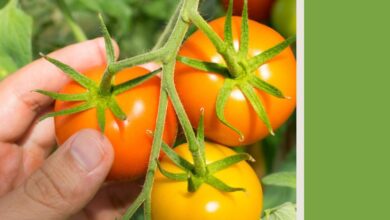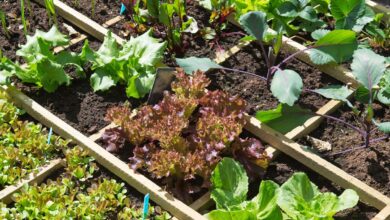How I Protect Plants From An Unexpected Freeze

[ad_1]
Early spring is a tough time for gardeners. We’re eager to get started outside, but we have to wait for the last frost. Of course, we can only guess when it will be, so sometimes a frost harms early plants. These are a few of the methods I’ve used successfully to protect plants from freezing, and some I might try in the future.
Moving Plants Inside
I grow a lot of plants in containers to fill and beautify an otherwise large, plain concrete patio. These pots contain herbs and annuals, both types of plants that don’t grow in my Michigan climate and can’t handle a freeze or frost.
The simplest thing to do is bring them indoors. When a frost or freeze is expected overnight in spring, I just carry these containers into the garage for the night. Because I have cats who like to nibble, the plants have to stay there instead of in the house. The garage is just warm enough to keep the warm weather plants safe overnight.
Applying Mulch
We always keep a few bags of mulch on hand in the yard. We do a full mulch reapplication on beds every few years and keep some leftovers to patch bare spots in between.
That mulch comes in handy when the weather takes a downturn in the spring. For plants that are borderline hardy in the lower temperatures, I pile up some mulch and leave it there until the cold snap passes. I can collect the mulch and use it again later if needed.
Creatively Covering Vulnerable Plants
One of the most common ways to protect plants from freezing is covering them with something. Most of my plants are perennials or annuals I can bring indoors in containers.
In the past, though, I used to grow vegetables, some of which were very vulnerable to those later spring freezes. One year, I put in young tomato plants. It should have been safe, the last frost date long past. And yet, this being Michigan, temperatures dropped for a couple days.
I didn’t want to lose my tomatoes, and I didn’t have any garden plastic or burlap. I had to get creative and at the last minute threw a couple of fleece blankets over the plants. It worked perfectly.
Using Cloches
One day, I hope to have a bigger garden, and the time to grow more vegetables and cutting flowers. I have in mind the perfect way to protect those future vulnerable plants. I have seen innovative gardeners share their homemade, found, and recycled cloches to protect new growth, seedlings, and young plants during spring freezes:
- An upside down plastic bucket
- Water bottles with the bottom cut off, fitted over seedlings
- Two-liter plastic bottles for larger new plants
- Movable cold frames
While I dream of my future garden, I’ll continue to care for the plants I have now, protecting them from cold even as I’m eager to plant as soon as the snow melts.
[ad_2]
Source link






